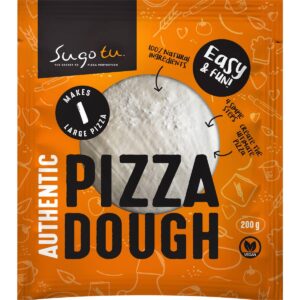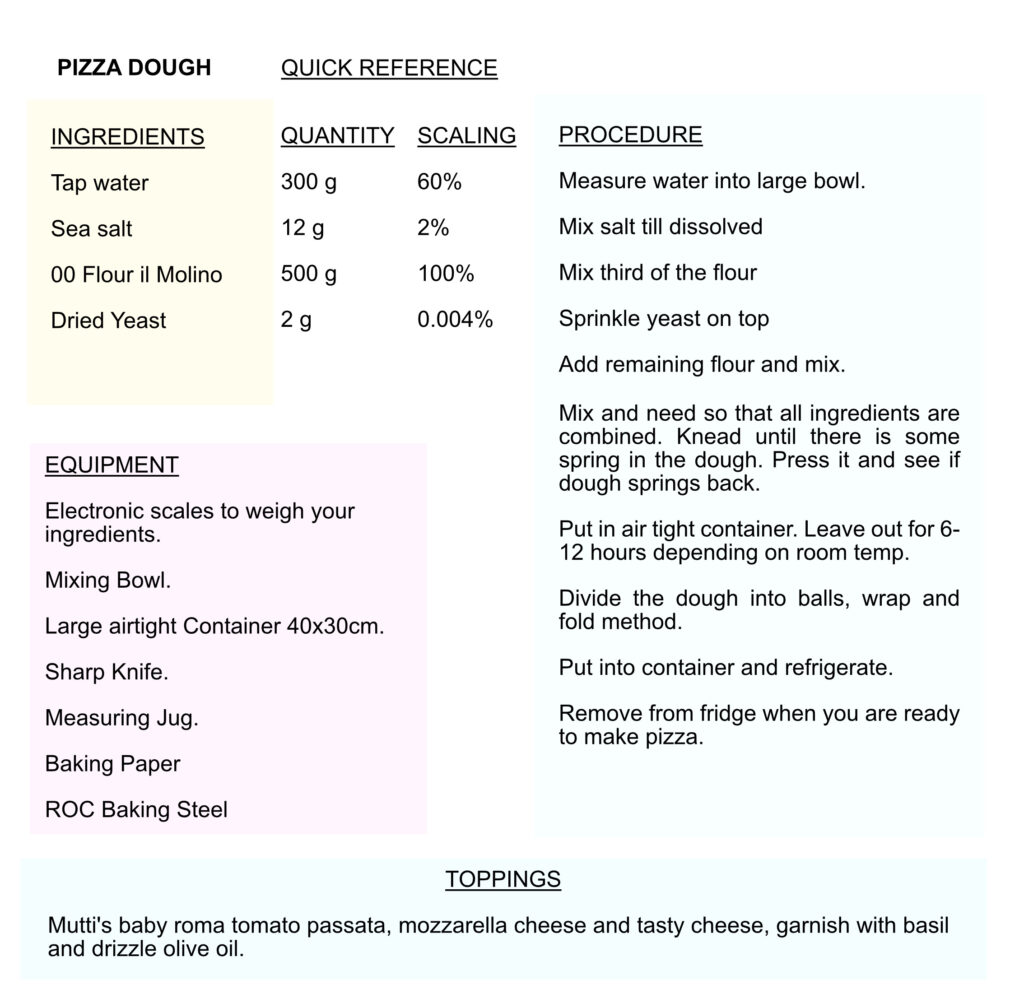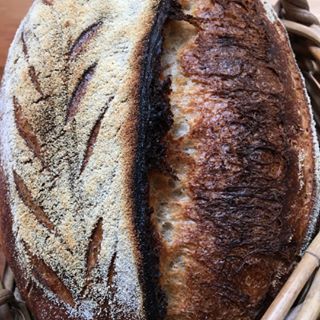PIZZA Dough Recipe

This beginners recipe is for those of us making our own pizza dough for the first time at home.
If you want to save some time, head to Woolworths and purchase ready to go, fresh pizza dough by Sugo tu. It’s $2.50 per dough ball. This is more than the cost if you make it yourself but it’s a time saver. It is a great tasting dough and an easy way to start your pizza making journey.

If you are ready to make your own then keep reading.
It’s a 24 to 48 hour (approx) rise recipe i.e. you mix the dough 1-2 nights before you intend to cook.
There are four essential ingredients and two essential attitudes for pizza dough;
The ingredients are Flour, Water, Salt and Yeast.
The two essential attitudes are curiosity and patience. Learning to make pizza from scratch can be challenging, and often takes time to master the methods and techniques. But it’s like learning to ride a bike, once you know how to do it, it will be almost impossible to unlearn.

First of all let’s gather the equipment
The bare essentials are;
- Electronic scales to weigh your ingredients.
- Mixing Bowl.
- Large airtight Container 40x30cm.
- Sharp Knife.
- Measuring Jug.
- Baking Paper
- ROC Baking Steel
Next we gather the ingredients
The ingredients we need for the dough are
Tap water – 300 g
Salt – 12 g
00 Flour (Double Zero) – 500 g
Dried yeast – 2 g
PROCEDURE
Measure water into large bowl.
Mix salt till dissolved
Mix third of the flour
Sprinkle yeast on top
Add remaining flour and mix.
Mix and need so that all ingredients are combined. Knead until there is some spring in the dough. Press it and see if dough springs back.
Put in air tight container. Leave out for 6-12 hours depending on room temp.
Divide the dough into balls, wrap and fold method.
Put into container and refrigerate.
Remove from fridge when you are ready to make pizza.
Let’s mix it up (Time required: 15mins, 5 mins clean Up)
Wednesday night (or two nights before) take your large mixing bowl put it on your scales, zero your scales, add 300 grams (mls) of tap water, add 12 grams of salt. Stir the salt until it has dissolved.
Start adding the flour, add about 150 grams of flour and stir the mix.
Before adding more flour we are going to add the yeast, sprinkle it in. Then start adding the remainder of the flour.
Keep mixing until all the flour from edges and sides has been absorbed.
Your hands might get sticky with dough, keep mixing for 10 minutes. Add a small amount of flour if too sticky (sticky is alright). After kneading the dough will feel slightly elastic. Put it in your airtight container with lid to sit 6-12 hours on the bench.
6-12 hours later (10mins)
6-12 hours later, divide the dough into even portions (250grams each depending on the size you want your pizzas), you should see that your dough has slightly increased in size and there will be small air pockets when you cut it. Make the portions into small balls using a fold and tuck method, place them back in your airtight container and refrigerate.
I’m making pizza!
At least 45mins before you want to cook, turn on your oven and place you ROC Baking Steel in the oven to preheat, use the pizza setting or fan forced setting on your oven. Crank the oven all the way up. You can put the steel on one of the shelves just above the middle.
Shape your dough into a round shape starting from the middle. Don’t use a rolling pin, just slowly stretch and push it into shape with your hands so that you don’t loose all the air bubbles from the dough. Don’t squeeze the dough.
I like to use baking paper when making my pizza. I use some flour on my hands and the dough and shape the dough. I leave my dough on the baking paper whilst adding my toppings. I slide the pizza and baking paper onto a chopping board and then slide the pizza with the paper into the preheated oven.

How long to cook it
While cooking you can watch to see how your pizza is going, and use a spatula to turn it if one side is getting more cooked than the other. Use a spatula to slide the pizza onto your chopping board or pull the pizza with the paper. Watch out for hot surfaces!
Leave to rest for a few minutes and serve.
Once you’ve started on the pizza making journey then you can experiment and try some new methods to create subtle differences in your dough. Have a look around online for other pizza making resources as there are plenty out there. One that I recommend is Sourdough Baking Australia Facebook Group. If you have netflix check out Cooked, the air episode where they talk about the importance of air bubbles in dough for flavour.
This is a quick introduction so please let me know if you have any questions.
Peter
Founder of ROC Baking Steel
Further info
Shaping techniques
Check out Johhny Di Francesco’s videos where he teaches techniques used for shaping pizza dough
How to adjust the quantities:
Use your flour as the basis for measuring the other ingredients. The other ingredients are measured in relation to the quantity of flour.
So for 1kg of flour you will put 60% water. 1000g x 60% =600 grams of water.
2.2% Salt (1000g flour x 2% = 20grams salt (adjust to taste)
With the yeast it’s hard to only do 1gram with most digital kitchen scales, you would need a micro scale. But if it is 2 grams it will be close enough.
Download the PizzaApp calculator from App/Play Store.
More about choosing ingredients
Flour
For the flour we will use a bread or pizza/pasta style flour. I have been using il Molino 00 Flour and it gives a great tasting pizza. To get started you can buy something like a lighthouse brand or an Italian imported 00 flour. Regular plain flour won’t work as well for pizza/bread because the protein quantity and type is not the same. Bread flour is generally a classification of wheat harvested at a particular time of the year. If you want a deep dive guide on the properties of wheat check out Jeffrey Hamelman‘s ‘Bread : A Baker’s Book of Techniques and Recipes’. Flour will also have different texture and some are milled finer than others.
Water
Regular town tap water will work just fine for pizza in most parts of Australia. Filtered water is also great.
Salt
Salt, the type of salt makes a difference to the flavour, some are saltier than others and have a different effect. But for purpose of beginning your regular table salt or sea salt will do well. Pink salt and Celtic salt work great too.
Yeast
Buy a commercially made yeast when you are starting out, I just tried a new Lighthouse yeast which also has Vitamin C (ascorbic acid) mixed in and will greatly help your dough rise and capture the air.
Yeast can be dried or fresh. Generally most supermarkets only stock the dry yeast. And delicatessens and Wood-fired Pizza shops will be able to supply you fresh yeast. Later on you can make your own yeast starter.
90 DAY MONEY BACK GUARANTEE – EXTENDED WARRANTY




© 2018-2020 Mr Tee & Co. Pty Ltd
